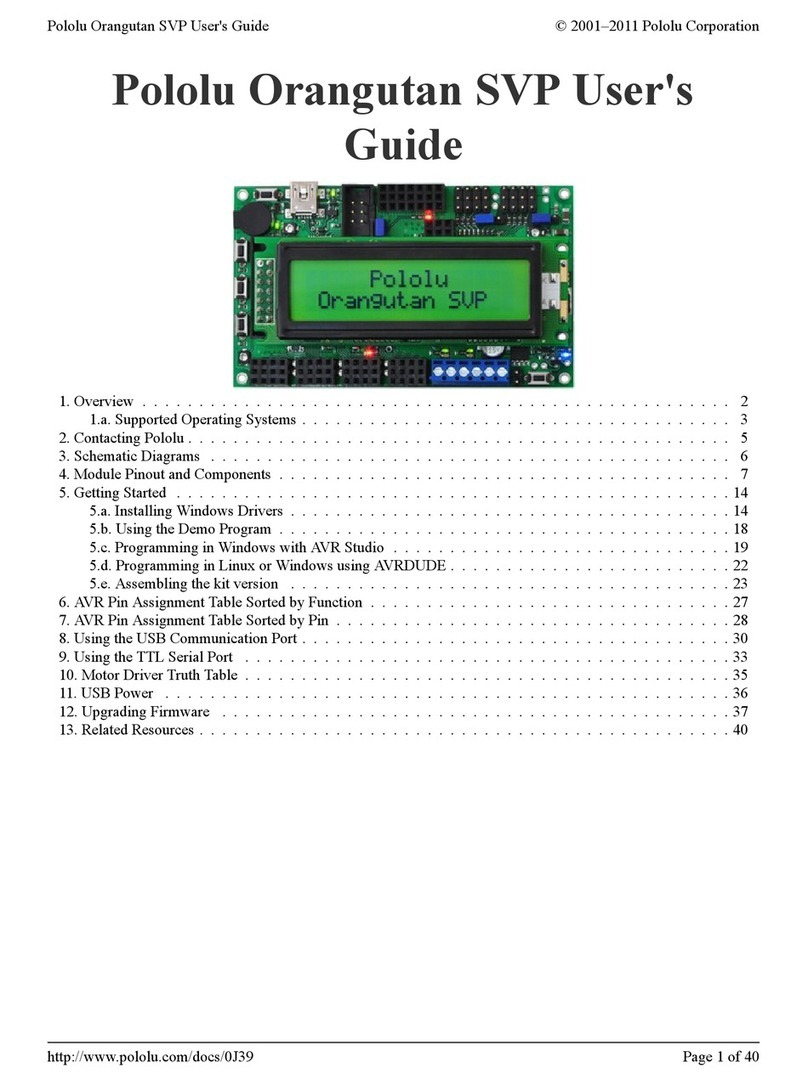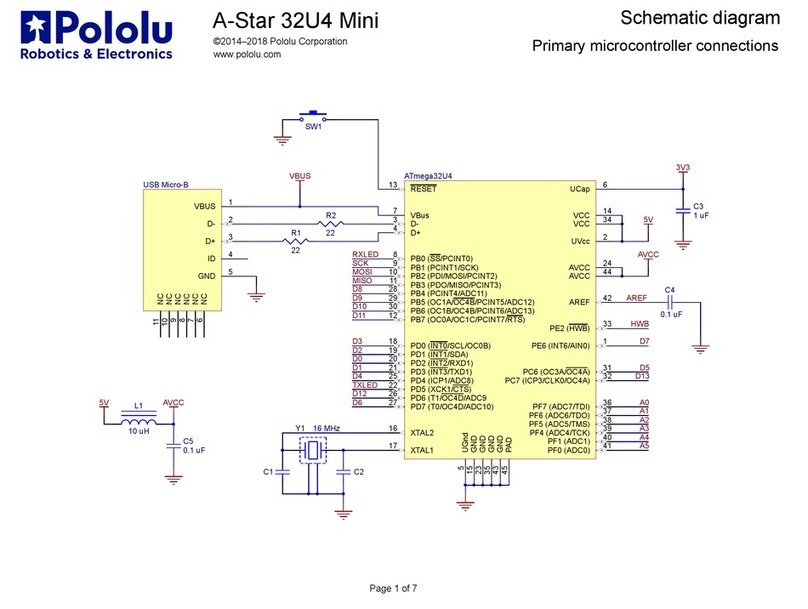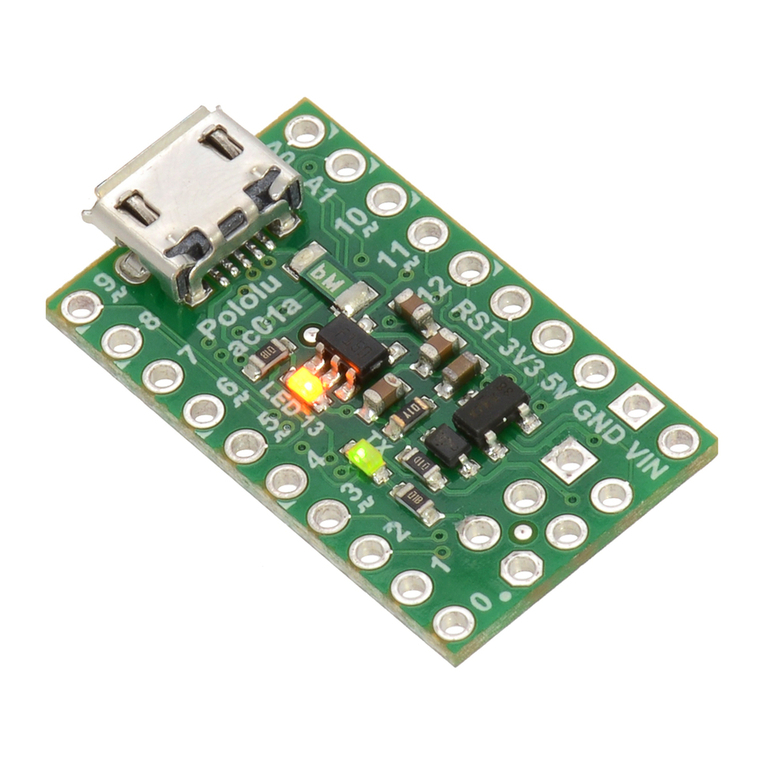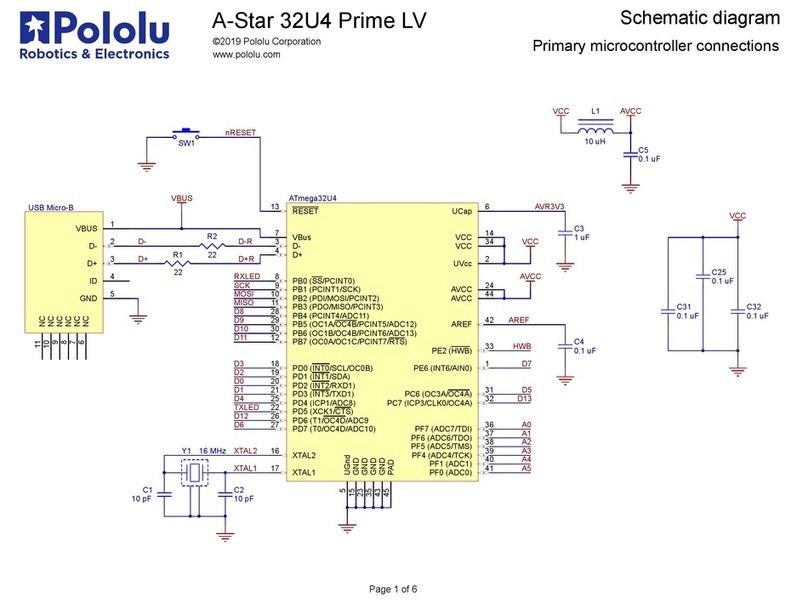A-Star 32U4 Mini LV, bottom view with
dimensions.
This version, the A-Star Mini LV, can be powered from a 2.7 V to 11.8 V external source. The input
voltage is regulated to 5 V by a TPS63061 switching step-up/step-down (buck-boost) converter
from Texas Instruments. (We also make a standalone regulator based on this integrated circuit.)
The regulator’s flexibility in input voltage is especially well-suited for battery-powered applications
in which the battery voltage begins above 5 V and drops below 5 V as the battery discharges.
Without the typical restriction on the battery voltage staying above 5 V throughout its life, a wider
range of battery types can be considered. For example:
A 4-cell battery holder, which might have a 6 V output with fresh alkalines or a 4.0 V
output with partially discharged NiMH cells, can be used to power this A*.
A disposable 9 V battery powering the board can be discharged to under 3 V instead
of cutting out at 6 V, as with typical linear or step-down regulators.
As shown in the left graph below, the LV’s switching regulator has an efficiency – defined as
(Power out)/(Power in) – of 80% to 90% for most combinations of input voltage and load.
The A-Star’s components, including the microcontroller and LEDs, draw 30 mA to 40 mA in typical
applications. The rest of the regulator’s achievable output current, which depends on input voltage
as well as ambient conditions, can be used to power other devices. The right graph above shows
output currents at which the voltage regulator’s over-temperature protection typically kicks in after a
few seconds. These currents represent the limit of the regulator’s capability and cannot be
sustained for long periods; a good estimate for the maximum continuous regulator output current is
60% to 70% of the values shown in the graph.
Arduino compatibility
The A-Star 32U4 ships with a preloaded Arduino-compatible bootloader (which uses 4 KB of flash
memory, leaving 28 KB available for the user program). We provide a software add-on that enables
the board to be easily programmed from the Arduino environment.
The A-Star 32U4 Mini boards use the same microcontroller as the Arduino Leonardo and Arduino
Micro and run at the same frequency, and they are the same size as the Arduino Micro, but they
offer a number of advantages over these other ATmega32U4-based boards. Most notably, their
efficient switching regulators cover a wide range of input voltages, opening up new possibilities for
powering projects built around Arduino-compatible microcontroller boards. Another advantage is
the power selection circuit based on the TPS2113A power multiplexer from Texas Instruments,
which allows safe, seamless power switching between USB and an external source without losses
from passive components like fuses or diodes along with the ability to monitor and control the
selected power source. Additionally, the A* 32U4 Mini breaks out a few additional pins from the
ATmega32U4 microcontroller that are not exposed on the Arduino Micro or Leonardo, and it
features larger, more convenient mounting holes than the Arduino Micro.






























